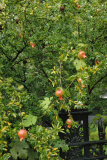Additional notes (click to expand)
Commemorative
The arms of the Royal College of Physicians, granted in 1546, depict a ripe fruit of a pomegranate below the hand feeling the pulse.
The juice was used in medicine as its watery, cooling properties were regarded as an appropriate treatment for fevers which were caused, as was then believed, by an excess of the hot humours.
Pomegranates were introduced into England in the early 16th century, so it was a novel fruit to the founders of the College
Our specimen, at the top of the lawn, was planted by Sir Cyril Clarke in 1977 to mark the Silver Jubilee of Her Majesty the Queen.
Oakeley, Dr. Henry F. (2014). Conium maculatum, Hemlock, Cicuta, Conio.
link
Medicinal
Culpeper: In the Complete Herbal and English Physician (1826) says the fruit ‘... has the same general qualities as other acid fruits.’ Of the flowers he says (among other properties) that ‘A strong infusion of these cures ulcers in the mouth and throat, and fastens loose teeth.’
Culpeper, Nicholas. (). Complete Herbal & English Physician, Magna Books. Facsimile 1826 ed.
Pomegranate bark can only be sold by registered pharmacies. In South Africa the fruit rind is used for diarrhoea and stomach ache, and the bark as a vermifuge, but undesirable side effects make this dangerous. It is reported to be effective against fevers, as a diuretic, to lower blood sugar and to be both antibacterial and antiviral (van Wyk).
Van Wyk, B.E., Van Oudtshoorn, B Gericke, N. (2000). Medicinal Plants of South Africa, Briza Publications. 2nd ed
The story of the Pomegranate, Punica granatum- part one (c) H F Oakeley 2014)
On the of the Royal College of Physicians’ coat of arms, granted to the College by Henry VIII in 1546, there is a rather indistinct blob of fruit, originally described as a ‘powme granate golde’, a golden pomegranate. The history of the College1 (2001) states that it is there because it ‘cured burning agues [fevers]’. The suggestion that it was taken from the coat of arms of Catherine of Aragon, who married Henry VIII in 1509 (divorced 1533, died 1536), is an unlikely alternative, as Dr Stuart Mason, FRCP, former editor of the Journal of the RCP, noted (1992).
If a treatment for fevers was the reason, then one would expect the medical texts of the period around 1545 to reflect the then prevalent humoural theory of medicine, and to state that cooling, cold, refreshing pomegranate juice to be an antidote to the excess of the hot humours which ‘caused’ a fever. They do not.
The Compendium Medicinae of Gilbertus Anglicus (1510) is one of the few that do:
" Fruits are to be eschewed, except acid pomegranates, whose juice cools the stomach and relieves
thirst. Boiled meats, seasoned with herbs like sage, parsley, mint, saffron, etc., are better than roasted meats, and onion and garlic are to be avoided. There is nothing on pomegranates in:
“Regimen sanitatis Salerni. This boke ... is translated out of the Latyne tonge in to Englyshe by Thomas Paynel. Whiche boke is amended, augmented, and diligently imprinted.” Londini, In aedibus Tho. Bertheleti, (1535)
The medicinal author who dominated European therapeutic beliefs for 1500 years was Pedanius Dioscorides of Anazarbus (AD 40-90). His Materia Medica was the basis for all medical herbals into the mid-17th century, but he writes that the sweet, juicy pomegranate creates a ‘degree of warmth in the stomach ... consequently it is unsuitable for people running a fever’. However, he does give other medicinal uses of the flowers, roots, peel and bark. Galen (AD 200), the other great writer from antiquity, only recommended it for heartburn and an excess of cold in the stomach. Its medical uses are discussed in Hummelberger’s (1537) commentaries on the 8th century herbal of Apuleius Barbarus, but there is no mention of its use in fevers. Leonhart Fuchs great Latin herbal3 of 1542, and Turner’s English New Herball (1542) do not mention pomegranates; Ruellio4, in his Latin commentary on Dioscorides in 1543, repeats the same caution against using it in fevers.
Oakeley, Dr. Henry F. (2014). Conium maculatum, Hemlock, Cicuta, Conio.
link
The Story of the Pomegranate Part 2. (c) H F Oakeley 2014
It is not until Dodoens (1554), writing in Flemish, notes that the sour pomegranates are good for fevers, and this is repeated by L’Ecluse (1557) and Henry Lyte5 (1578) in their French and English translations. ‘Pomegranates be colde and somewhat astringent ... it is very good against al hoate agues ... especially the iuce of the sower pomegranates ... for the sweete pomegranates (because they engender a little heate and breede winde) are not very meete to be used in agues’. Matthiolus (1569) in his commentary on Dioscorides does not take this up, continuing the warning against its use for the agues. Johnson’s 1633 edition of Gerard’s Herball, while writing that it is cooling, makes no mention of using it for fevers, but the physician William Langham (?1597, 1633) supports its use with ‘The juice is very good for a hot and weake stomach ... and for all hot agues and inflammations of the liver and blood.’ Parkinson in his Paradisi in Sole 1629 writes ‘... is very much in Physicke. To cool and binde all fluxibility of the body and humours ...’, but in his monumental Theatrum Botanicum (1640) he follows Dioscorides ‘... forbidden in agues because they breed choler [heat] ...’. He had close links with the Royal College of Physicians (helping them with the preparation of their Pharmacopoeia Londinensis in 1618). William Coles (1657) extolled their virtues against fever: ‘the Juyce and kernels are good in hot griefs and burning fevers to quench thirsts and heat of the stomach’.
By 1725 Hans Sloane President of the RCP wrote of pomegranates: ‘The Fruit is cooling, good in Fevers, quenching Thirst, drying and binding, and withal very stomachic.’
Oakeley, Dr. Henry F. (2014). Conium maculatum, Hemlock, Cicuta, Conio.
link
The Story of the Pomegranate part 3 (references). (c) H F Oakeley 2014
References
1 - McDonald I, Moss-Gibbons, C (2001). The Royal College of Physicians and its Collections. London: James & James.
2 - Beck LY (translator) (2005). Pedanius Dioscorides of Anarzarbus
de materia medica. New York, Hildesheim, Zurich: Olms-
Weidmann.
3 - Fuchs L (1542). De historia stirpium commentarii insignes.
Basileae: In officina Isingriniana.
4 - Ruellio J (1543). Pedanii Dioscoridis anazarbei de medicinali
materia libri sex. France: Chr Egenolphum
5 - Lyte H (1578). Nievve herball or historie of plantes. Antwerpen:
Henry Löe.
6 - L’Obel (Lobel) M de, Pena P (1570–1). Nova stirpium adversaria.
London: Thomas Purfoot.
7 - L’Obel (Lobel) M de (1576). Plantarum seu stirpium historia.
Antwerp: Christopher Plantin.
Sloane, Sir Hans 1725 (Vol 2) as the Voyage to the Islands Madera, Barbados, Nieves, S Christophers and Jamaica...with the natural history of the..last of those islands..
Culpeper in The Physicall Directory makes no mention of the fruit, but says of the flowers ‘... they stop fluxes and the Terms in women.’
Culpeper, Nicholas. (1650). A Physical Directory . London, Peter Cole.
Historically, a symbol of fertility for many civilizations. Medicinally, alkaloids and tannins prove effective against tapeworms and diarrhoea.
Restricted medicinally.
Medicinal uses
Uses supported by clinical data
No information was found.
Uses described in pharmacopoeias and well established documents
Used orally for the treatment of diarrhoea and intestinal parasites (7, 19).
Uses described in traditional medicine
Used orally to treat dyspepsia, sore throat, menorrhagia, leukorrhoea and
ulcers (12).
From WHO Monographs on Selected Medicinal Plants Vol 4 2005, WHO Geneva
Cortex Granati consists of the dried root or trunk bark of Punica granatum
L.
Medicinal uses
Uses supported by clinical data
None.
Uses described in pharmacopoeias and well established documents
Orally for the treatment of chronic diarrhoea, dysentery, gingivitis and
intestinal parasites (1, 7, 18).
Uses described in traditional medicine
Treatment of bronchitis, fever, gastrointestinal ailments, menorrhagia,
respiratory tract infections, skin rashes, vaginal infections and worms
(12, 19).
Contraindications
Hypersensitivity or allergy to the plant material.
From WHO Monographs on Selected Medicinal Plants Vol 4 2005, WHO Geneva
Pericarpium Granati consists of the dried pericarp of Punica granatum
L. (Lythraceae)
Medicinal uses
Uses supported by clinical data
None.
Uses described in pharmacopoeias and well established documents
Orally for the treatment of chronic diarrhoea, dysentery, gingivitis and
intestinal parasites (1, 7, 18).
Uses described in traditional medicine
Treatment of bronchitis, fever, gastrointestinal ailments, menorrhagia,
respiratory tract infections, skin rashes, vaginal infections and worms
Contraindications
Hypersensitivity or allergy to the plant material.
From WHO Monographs on Selected Medicinal Plants Vol 4 2005, WHO Geneva
Nomenclature
Granatum malum; balustines.
Culpeper, Nicholas. (1650). A Physical Directory . London, Peter Cole.
Now there is always a query about the name Punica granatum, for in modern nomenclatural practice the species name (granatum) appears to be neuter and does not agree in gender with the genus name (Punica is feminine). Sometimes these apparent idiosyncrasies or errors are explained by knowledge of Latin, where the endings of a noun indicate their gender: –um indicates neuter, -us is male and -a is female. Botanists have entered into acrimonious internet correspondence complaining that our pomegranate should be Punica granata. An easier example is Taxus brevifolia, the Pacific yew tree, where Taxus brevifolius would seem to be correct. However, in classical Latin, all trees were feminine, as the schoolboy aide memoire declaimed:
- A WOMAN, ISLAND, COUNTRY, TREE - AND CITY FEMININE WE SEE. - PENELOPE, CYPRUS, GERMANIA, LAURUS, ATHENAE -
So, Taxus is feminine despite having a masculine ending, and brevifolia is correct.
The early Latin names for the fruit of a pomegranate included Malum punicum and Malum granatum, where Malum (an apple) was a neuter noun and punicum (an adjective meaning Phoenician or Carthaginian) and granatum (containing lots of seeds) were therefore both neuter in agreement. Granata on its own, Malus punica and Malus granata were the names for a pomegranate tree, which is feminine – viz: one finds a neuter apple, Malum, growing on a female apple tree, Malus, despite the latter’s masculine ending. Parkinson (1640) writes ‘The Pomegarnet is called ... by Hippocrates in Latine, Malus punica and Malus granata [feminine], and the fruite Malum granatum, or punicum [neuter], because it was thought that they were brought over from that part of Africke, where old Carthage stood, into that part of Spaine, which is now called Granada, and from thence called Granatum’
Oakeley, Dr. Henry F. (2014). Conium maculatum, Hemlock, Cicuta, Conio.
link
Other use
Punica granatum L. Lythraceae Pomegranate, granatum malum, balustines. Distribution: E. Mediterranean to Himalayas. The Pomegranate is in the centre of the Arms of the Royal College of Physicians, perhaps for its use in cooling, and therefore for fevers. However it was the sour pomegranate that would have been used as Dioscorides says the sweet ones are unfit for use in agues. Culpeper (1650) makes no mention of the fruit, but says of the flowers ‘... they stop fluxes and the Terms in women.’ In the Complete Herbal and English Physician (1826) he says the fruit ‘... has the same general qualities as other acid fruits.’ Of the flowers he says (among other properties) that ‘A strong infusion of these cures ulcers in the mouth and throat, and fastens loose teeth.’ Gerard (1633) says that the cravings of pregnant women can be abolished with the juice, and perhaps it was scurvy which was being treated effectively when he reports that the juice was very effective against splitting of blood and for loose teeth. The dwarf form of this species, Punica granatum var. nana has fruits no more than 3cm across. Pomegranate bark can only be sold by registered pharmacies in the UK and used to be used as a vermifuge, with the secondary use that the tincture made from it doubled as a permanent ink. In South Africa the fruit rind is used for diarrhoea and stomach ache, and the bark as a vermifuge, but undesirable side effects make this dangerous. It is reported to be effective against fevers, as a diuretic, to lower blood sugar and to be both antibacterial and antiviral (van Wyk, 2000).
Oakeley, Dr. Henry F. (2013). Wellcome Library notes.
link
Notes by Henry Oakeley from Lindley's 'Flora Medica' (1838): The Pomegranate features on the College’s Coat of Arms and we have one in the European bed at the top of the College lawn and in front of 4, St. Andrew’s Place. Lindley reports that it comes from Bengal, Persia, China and Barbary and that there are ‘whole woods of Pomegranate trees in the Persian province of Mazenderan’. He advised that a liquid made from boiling the ‘bark of the root’ is a powerful treatment for intestinal worms, that the flowers are a tonic and astringent, and that the skin of the fruit is useful for treating vaginal discharges and chronic dysentery, the acid juice of the seeds being useful in ‘bilious fevers’. However, the alkaloids in the root that narcotise tapeworms are absorbed, causing central nervous system toxicity, and the skin of the fruit makes the best permanent black ink according to John Parkinson (1567-1650), so these treatments are best avoided. The fruit makes a pleasant cordial
Lindley, John. (1838). Flora Medica, Longman, Orme, Brown, Green & Longmans
Geographical distribution
- Asia-Temperate, Caucasus, Transcaucasus
- Asia-Temperate, Middle Asia, Turkmenistan
- Asia-Temperate, Western Asia, Afghanistan
- Asia-Temperate, Western Asia, Iran
- Asia-Temperate, Western Asia, Iraq
- Asia-Temperate, Western Asia, Turkey
- Asia-Tropical, Indian Subcontinent, India
Podcast
Punica granatum L.
Family: LYTHRACEAEGenus: Punica
Species: granatum L.
Common names: Pomegranate
Pharmacopoeia Londinensis name: Granatum malum/Balaustorium
Distribution summary: Caucasus, C. & W. Asia, N. India
Habit: Tree
Hardiness: H4 - Hardy; average winter
Habitat: Dry limestone soils
Garden status: Currently grown
Garden location: Europe & Middle East (J), Plants in pots (POT)
Flowering months: June, July, August, September
Reason for growing: Medicinal
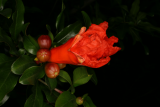
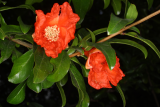
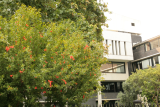
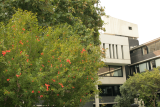
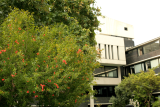
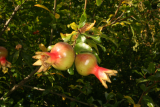
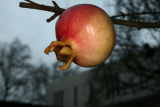
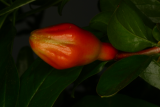

 pruned .JPG)
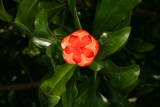
.JPG)
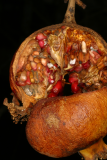
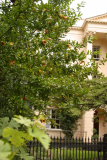

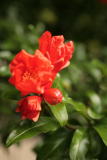
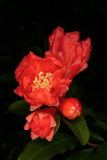
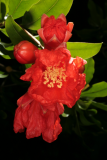
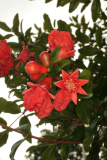
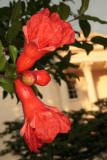
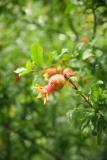
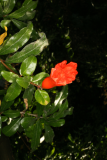
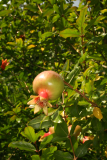
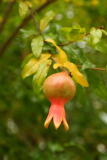
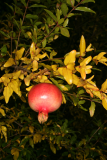
 ex Padua.JPG)

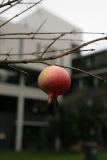
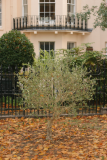

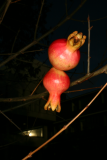
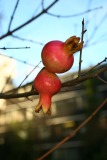
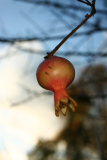
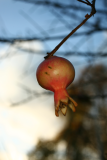

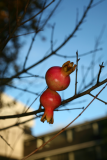
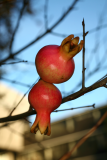
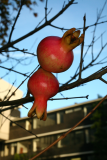
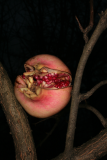
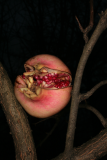
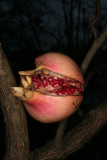
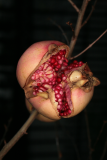
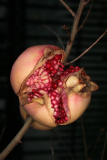
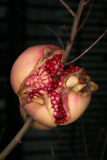
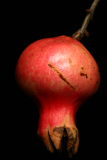
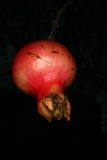

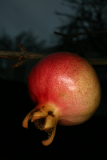



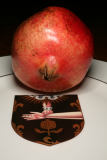

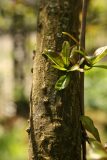
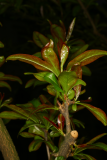
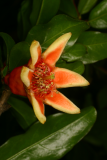
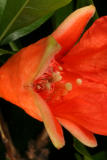
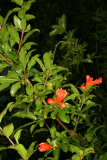
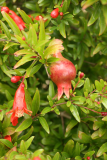

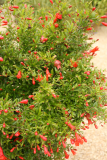
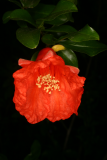
.JPG)
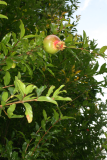
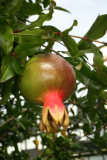
.JPG)
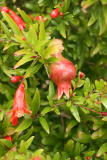
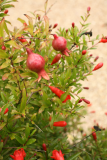
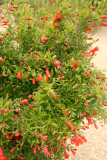
.JPG)
.JPG)
